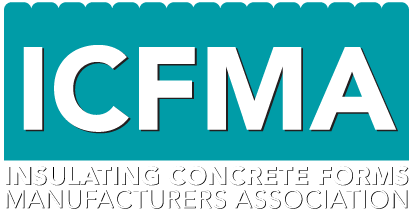
Concrete has been used for construction since the ancient Egyptians. After World War II, it was used as a staple material for rapid reconstruction. But in the 1980s, builders and architects grew tired of the concrete jungles and it simply went out of style. However, today, it’s making a comeback in an even better and more durable form as insulated concrete forms (ICF). Designed with polystyrene and concrete, they make one of the most solid, durable and energy-efficient building envelope materials for homes and commercial buildings.
Insulated concrete walls offer an array of advantages over wood:
Unlimited design
ICFs can be constructed in any shape or design. They can also be used for gables up to 47 degrees and can be achieved with ease. Since they can be built with minimum resources, they also represent an ideal solution for remote constructions. Homes made of ICFs can look just like any other houses or very different depending on the desired designs. Generally, the exterior surfaces can be finished with brick, stone, vinyl or wood siding or in more modern concrete styles while the inside can feature unique designs and creative architectural shapes for attractive doors, arches and bay windows.
Structural strength and durability
“Instead of wood walls the ICF system interlocks (like Lego) to create one continuous monolithic envelope from 10 to 30 centimeters thick,” explained Keven Rector at NUDURA, a leading name in building with insulated concrete forms. Therefore ICFs provide an unrivaled level of durability and insulation and as a result deliver far greater impact resistance, able to withstand winds of up to 402 kilometers per hour (250 mph). Which means your family is safe from natural disasters like hurricanes, floods, earthquakes, and tornadoes. Also, since it is made of non-biodegradable material, the whole structure is safe from rot, corrosion or degradation.
Providing energy efficiency, comfort, and clean air
Numerous studies have demonstrated that houses made of ICFs are extremely energy efficient. ”The ICF foam material isolates the concrete and significantly reduces the flow of heat through the wall,” Rector explained. “It stabilizes the internal temperature from day to night fluctuations and provides a largely self-regulating environment. As a result, you will need less energy for mechanical heating and cooling, delivering cost savings throughout the year.” “A home built with this wall system,” Rector added, “stands to be stronger, provides greater safety, offers greater sound resistance and would be far less prone to mold, cold spots and drafts.” More information is available at www.nudura.com.







